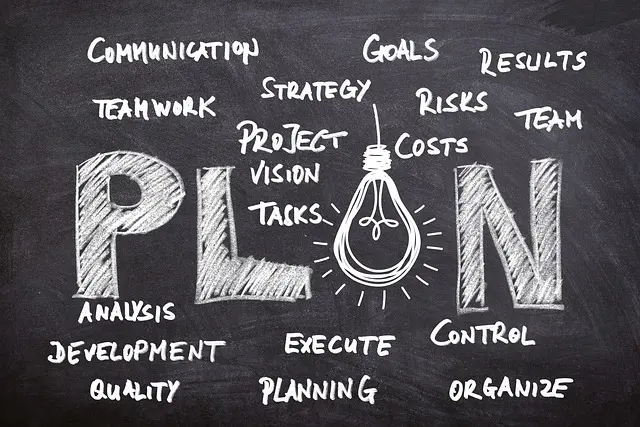
Understanding the Global Landscape of STEM Education
STEM (Science, Technology, Engineering, and Mathematics) education has emerged as a crucial aspect of modern education systems around the world. With the rapidly evolving technological landscape and the increasing demand for STEM-related careers, it is imperative to understand the current state of STEM education on a global scale.
Several countries have recognized the importance of emphasizing STEM education from the early stages of schooling. They have taken significant steps in integrating STEM subjects into their curriculum, fostering hands-on learning experiences, and developing innovative teaching methods. This global appreciation for STEM education stems from the realization that cultivating STEM skills in students equips them with the necessary knowledge and capabilities to excel in the twenty-first century workforce. However, despite the growing emphasis on STEM education, there are still notable disparities in the accessibility and quality of STEM programs across different countries. These discrepancies highlight the need for further exploration and analysis to identify the key factors that contribute to the success or challenges of STEM education systems worldwide.
The Role of Education in Fostering STEM Skills
In today’s rapidly advancing world, the role of education in fostering STEM (Science, Technology, Engineering, and Mathematics) skills is more crucial than ever. STEM education plays a pivotal role in equipping students with the necessary knowledge and skills to thrive in the 21st-century job market. By emphasizing critical thinking, problem-solving, and innovation, education lays the foundation for individuals to pursue careers in STEM fields. Moreover, by fostering curiosity and a love for learning, education ignites a passion for exploration, discovery, and scientific inquiry, which are at the core of STEM disciplines. Through a well-rounded educational experience that integrates STEM subjects into the curriculum, students can develop the skills needed to excel in an increasingly technology-driven society.
One of the key aspects of education in fostering STEM skills is the development of a strong conceptual foundation. By providing students with a solid understanding of core scientific principles, mathematics, and engineering concepts, education enables them to build upon this knowledge and develop advanced skills. Through hands-on experiments, problem-solving activities, and project-based learning, students are encouraged to apply their theoretical knowledge to real-world situations. This practical application of STEM concepts not only enhances their understanding but also hones their analytical and critical thinking skills. Additionally, education fosters a collaborative approach to learning, encouraging students to work together in teams to solve complex problems. This collaborative learning environment not only prepares students for future professional environments but also fosters the development of essential communication and teamwork skills, which are crucial in STEM fields.
Key Factors to Consider When Evaluating STEM Education Systems
When evaluating STEM education systems, there are several key factors that need to be considered. First and foremost, it is crucial to assess the curriculum and teaching methods implemented in these systems. A well-designed curriculum that covers a wide range of STEM subjects and incorporates hands-on learning experiences can greatly enhance students’ understanding and proficiency in STEM disciplines. Additionally, the teaching methods employed should be engaging and interactive, fostering critical thinking, problem-solving skills, and creativity among students. An effective STEM education system also emphasizes the importance of practical applications and real-world connections, enabling students to see the relevance and impact of their learning.
Another vital factor to consider is the availability and quality of resources and facilities. Access to state-of-the-art laboratories, technology, and relevant educational materials is essential for students to gain practical experience and keep up with the rapidly evolving STEM fields. Moreover, the presence of qualified and competent STEM teachers is crucial. Highly skilled educators who possess in-depth knowledge of their respective subjects and are capable of effectively imparting that knowledge to students play a pivotal role in shaping the success of STEM education systems. Furthermore, ongoing professional development opportunities for teachers should be provided to ensure they stay abreast of the latest advancements and teaching methodologies in STEM.
Exploring the Success Stories of Countries with Strong STEM Education
South Korea, often touted as a global leader in STEM education, has achieved remarkable success in cultivating a tech-savvy generation. The country’s approach to STEM education is built on a foundation of rigorous academic standards, a strong emphasis on critical thinking and problem-solving skills, and a comprehensive curriculum that covers various branches of science and mathematics. Through a combination of high-quality teacher training programs and well-equipped classrooms, South Korea’s students consistently rank among the top performers in international assessments, demonstrating their mastery of STEM subjects.
Another country that stands out for its strong commitment to STEM education is Finland. Renowned for its innovative educational system, Finland has implemented several key strategies to nurture students’ interest and proficiency in STEM fields. By placing a strong emphasis on hands-on learning experiences, collaborative projects, and practical applications of knowledge, Finnish schools encourage students to actively engage with STEM subjects. Moreover, Finland emphasizes equal access to education for all students, ensuring that the benefits of their robust STEM education reach every corner of society, regardless of socioeconomic background or gender. This inclusive approach has not only yielded impressive academic results but has also helped Finland become a hub for technological innovation and research.
Analyzing the Curriculum and Teaching Methods of Leading STEM Education Systems
The curriculum and teaching methods of leading STEM education systems play a crucial role in shaping the skills and knowledge of students. These systems prioritize a hands-on and experiential approach to learning, allowing students to engage in practical activities and apply their theoretical knowledge in real-world contexts. The focus is not merely on memorizing facts and formulas but on fostering critical thinking, problem-solving, and creativity.
An effective STEM curriculum is designed to be interdisciplinary, integrating concepts from science, technology, engineering, and mathematics to provide a holistic learning experience. It goes beyond traditional subject boundaries and encourages students to explore the interconnectedness of these disciplines. Additionally, leading STEM education systems emphasize project-based learning, where students work collaboratively on complex, open-ended problems. This approach fosters teamwork, communication, and innovation skills, which are essential for success in the modern workforce.
The Impact of Investment and Funding on STEM Education
Investment and funding play a crucial role in the development and success of STEM education programs. The availability of financial resources enables educational institutions to enhance infrastructure, facilitate research and development, and recruit skilled teachers. With increased investment, schools can create state-of-the-art laboratories, provide access to advanced technology, and offer a range of STEM-related extracurricular activities. This allows students to have hands-on experiences and develop practical skills, promoting a deeper understanding of the subjects.
Moreover, funding helps in attracting and retaining talented educators who are passionate about teaching STEM subjects. By offering competitive salaries and professional development opportunities, schools can create a conducive environment for teachers to continually improve their knowledge and pedagogical skills. Well-trained teachers are crucial in imparting quality education and nurturing students’ interest in STEM fields. Additionally, investment in teacher training programs and mentorship initiatives can further enhance the effectiveness of classroom instruction, thereby benefiting students and strengthening the overall STEM education system.
Highlighting the Importance of Industry-Academia Collaboration in STEM Education
In today’s fast-paced and rapidly changing world, the importance of industry-academia collaboration in STEM education cannot be overstated. STEM fields, which encompass science, technology, engineering, and mathematics, are at the forefront of innovation and progress. As such, it is crucial for educational institutions and industry leaders to join forces and work together to bridge the gap between academia and the real-world applications of STEM knowledge.
The primary objective of industry-academia collaboration is to equip students with the skills and knowledge required to thrive in the ever-evolving STEM landscape. By forging partnerships and facilitating the exchange of ideas, industry professionals and educators can ensure that the curriculum and teaching methods align with industry needs. The symbiotic relationship between academia and industry not only benefits students but also helps businesses stay competitive by having a skilled workforce that can drive innovation and problem-solving. Through collaborative efforts, students gain access to practical experiences, internships, and mentorship programs, which enhance their understanding of real-world applications and prepare them for successful careers in STEM fields.
Assessing the Accessibility and Inclusivity of STEM Education Programs
Ensuring the accessibility and inclusivity of STEM education programs is crucial in cultivating a diverse and skilled workforce for the future. In many countries, there is a growing recognition of the need to provide equal opportunities for all students, regardless of their background or abilities, to engage in STEM learning. By removing barriers and creating a supportive environment, educational institutions can empower individuals who may have previously been marginalized or underrepresented in these fields.
One key aspect of assessing the accessibility of STEM education programs is considering the physical infrastructure and resources available. Schools and institutions need to be equipped with state-of-the-art laboratories, modern technology, and tools that allow students to explore and experiment. Furthermore, ensuring that these resources are not limited to a select few but are accessible to all students is paramount. This can be achieved by establishing grants and scholarship programs, as well as partnerships with industry and government to secure necessary funding for schools in underserved areas. Additionally, the availability of inclusive learning materials and adaptive technologies can help students with disabilities fully engage in STEM subjects, ensuring that no one is left behind.
Examining the Role of Government Policies in Promoting STEM Education
The role of government policies in promoting STEM education is crucial in ensuring the growth and success of this field. Governments play a significant role in setting the framework and direction for STEM education by implementing policies that prioritize and support its development. By investing in STEM education, governments can address the increasing demand for skilled professionals in science, technology, engineering, and mathematics. Such policies typically involve initiatives to enhance curriculum standards, improve teacher training, and provide resources and infrastructure for STEM education.
One key aspect of government policies in promoting STEM education is the focus on attracting and retaining talented educators. Policies may include incentives, such as higher salaries and career advancement opportunities, to encourage qualified individuals to pursue careers in STEM education. By valuing the expertise and experience of STEM educators, governments can ensure a high-quality teaching workforce that can effectively nurture students’ interest, knowledge, and skills in STEM disciplines. Additionally, policies may also prioritize professional development programs for STEM teachers to keep them updated with the latest advancements in the field and enhance their teaching methodologies.
Empowering Future Generations through STEM Education
As we move towards an increasingly technology-driven world, empowering future generations with strong STEM (Science, Technology, Engineering, and Mathematics) skills becomes crucial. STEM education has the potential to shape the next generation of innovators, problem solvers, and leaders. By equipping learners with a solid foundation in these disciplines, they can not only thrive in the digital age but also contribute significantly to society.
One key aspect of empowering future generations through STEM education is fostering a passion for these subjects at an early age. Introducing engaging and hands-on activities in classrooms can spark curiosity and enthusiasm among students. By making STEM education interactive and relevant to real-world challenges, educators can nurture a love for these disciplines that extends beyond the classroom walls. Moreover, inculcating critical thinking, problem-solving, and teamwork skills within STEM education can enhance students’ abilities to tackle complex issues and find innovative solutions. Through such approaches, we can empower future generations to embrace STEM fields and embark on successful career paths that drive societal progress.












